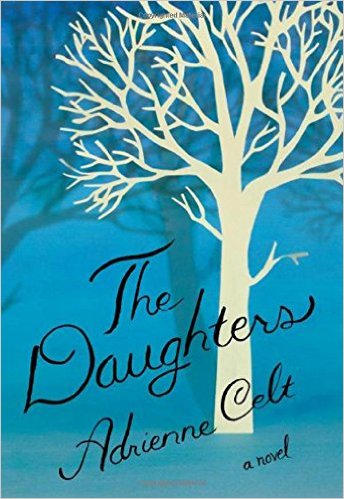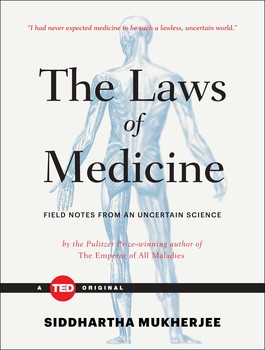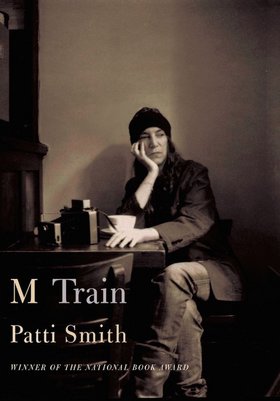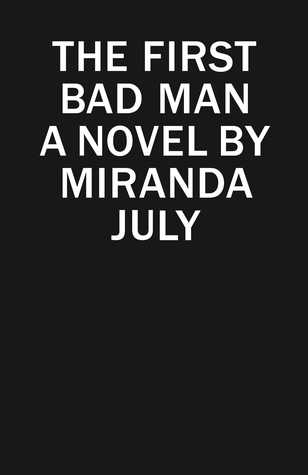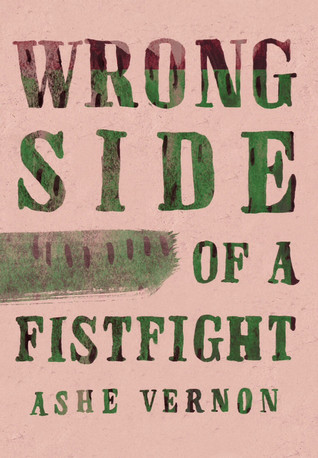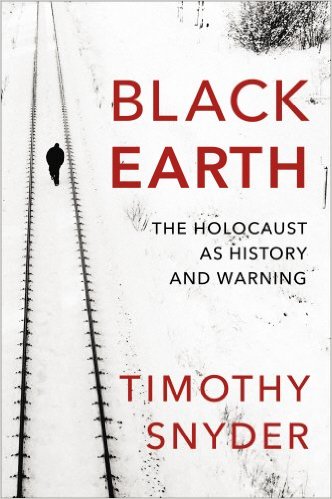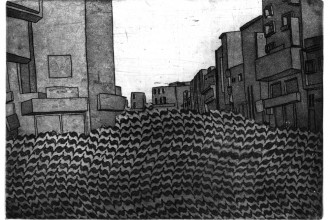‘The Daughters’, by Adrienne Celt
“And anyway isn’t that the function of stories? To teach our brains to dream?â€
‘The Daughters’ is full of stories: the story of its protagonist Lulu, her grandmother Ada, the Poland she left behind and the other dreamlike stories Ada told Lulu as the latter was growing up. For instance, the novel begins with the “old story†of a woman who sits in a tree in the Polish countryside. A man is drawn to this woman, convinced she is the love of his life. They embrace and his heart fails. Soon we are in another story: a young Greta — Ada’s mother — turns a group of dancing boys and girls into ice sculptures before finding her husband-to-be among the dancers and unfreezing the crowd.
All this comes back to a curse the women in Lulu’s family must suffer: they each give birth to a daughter and each lose something when their daughter is born. When the novel begins, world-class opera singer Lulu has just had her daughter Kara in a difficult childbirth that has left Lulu unable to sing. Soon we learn, Lulu has suffered another loss too: her grandmother Ada succumbed to a heart attack. In the pages that follow, Lulu grapples with the challenges of new motherhood while trying to reconcile herself to the loss of her grandmother by recounting the strange stories Ada used to tell her when she was a child.
I first discovered Adrienne Celt through one of her short stories. Her odd style, the not-quite reality of her narrative, fascinated me, so when her debut novel ‘The Daughters’ was released, I wanted to see if I would find that strange quality again. Sure enough, woven into the narrative are Ada’s fantastical, folklore-like stories — framed as the stories of the generations of women that came before Lulu and Ada — all of which linger on the periphery of reality.
At a time when so many ask if women “can have it all†(inadvertently pitting career and family against each other), Celt broaches the subject masterfully with the “either/or†nature of Lulu’s opera career and the birth of her baby. As for how these issues are reconciled, I’ll leave that for the novel to tell you.
‘The Laws of Medicine: Field Notes from an Uncertain Science’, by Siddhartha Mukherjee
Lillian Brown, Articles Editor
Pulitzer Prize winning author Siddhartha Mukherjee’s ‘The Laws of Medicine: Field Notes from an Uncertain Science’ was definitely the contextualizing piece of 2015 for me. While the book’s topics were particularly relevant, it is the way the book came to be that was also very contemporary. Mukherjee gave a TED Talk early in the year called “Soon we’ll cure diseases with a cell, not a pill,†which he soon after expanded from an eighteen minute speech to a full-length work of nonfiction.
The book is this decade’s brilliant revival of Atul Gawande’s ‘Complications: A Surgeon’s Notes on an Imperfect Science’, in that it examines the so-called “gray areas†of medicine, the “youngest scienceâ€. Mukherjee explains that sciences have laws, and he breaks medicine into three of these laws throughout the book:
“Law One: A strong intuition is much more powerful than a weak test.
Law Two: ‘Normals’ teach us rules; ‘outliers’ teach us laws.
Law Three: For every perfect medical experiment, there is a perfect human bias.â€
He uses these laws to “make perfect decisions with imperfect information,â€Â in regards to medicine and the incredibly complex process of a doctor’s decision making in treatment.
The book not only examines the “now†of medicine, but also the future, and what each new medical advancement could mean. It shaped my year, as the laws not only apply to medical professionals, but the rest of us too.
‘M Train’, by Patti Smith
Patti Smith performed with her band live this summer in Berlin to a mostly middle-aged audience who couldn’t stop dancing and crying. I was there dancing and crying too. She really does look like a crow. She destroyed a guitar on stage, playing it until every single string tore. She has an incredible ability to inspire optimism and genuine love in her audience.
This year, I have faced more cynicism, fear and pessimism than I have ever experienced before. I have been reading Patti Smith in search of authentic love for fellow human beings, untainted by politics or religion or socio-economic background.
Patti’s style can be cumbersome. She writes in consistently beautiful, dense, poetic prose, jam-packed with imagery, metaphor and mysticism. I can only digest those in little gulps. Yet Patti shares so much wisdom about love, about relationships, about ageing and her incessant commitment to art that I can only recommend reading it. ‘M-Train’ is a kind of sequel to her first autobiography ‘Just Kids’ (2010) which explores her relationship with the photographer Robert Mapplethorpe, their life together as struggling young artists in New York in the 70s, and Robert’s death to AIDS.
M-Train has a more mature tone, following Patti’s travels and married life with her husband, guitarist and soulmate Fred Sonic Smith. It is a series of anecdotes, travel diaries and snapshots wandering freely between moments past and present, from cups of black coffee in Manhattan to prison ruins in French Guiana and pilgrimages to the graves of her most revered artists. Fred died in 1994 at 45, and his absence clearly haunts her to this day.
During her concert, Patti dedicated the song Because The Night to her “boyfriend, Fred†who wrote the song with her in 1983 and with an incredibly coy smile she said: “he’s still my boyfriend, you knowâ€; I burst into tears.
‘The First Bad Man’, by Miranda July
Ambika Thompson, Missing Slate Author of the Month (July 2015)
Meet Cheryl Glickmann, narrator of Miranda July’s ‘The First Bad Man’. She’s a yawn of a woman in her early forties who lives alone and has worked the same boring job for the past twenty-five years. She’s lusting after a board member twenty odd years her senior, who she believes is her eternal partner, and who himself is sexually obsessed with a sixteen year old, which he sexts Cheryl about because he needs her blessing to “seal the dealâ€. Cheryl also believes that she keeps meeting the spirit of a baby that she held when she was nine in other babies who she refers to as Kubelko Bondy.
The main beefalo of the novel centres around Cheryl’s relationship with her boss’s daughter Clee, a blonde, busty, sweatpant wearing, diet cola swigging, twenty-one-year-old with an overly ripe foot fungus problem, who refers to herself as a misogynist, and whom Cheryl lets live with her for free. They start an “adult gameâ€, a term she learns from her therapist, reenacting her company’s self-defence videos, where Cheryl is always the one attacked both physically and mentally, and it pretty much just gets weirder from there. (Note: It’s weird from the onset, which is what makes this book so great.)
July has created a world that is disturbing and uncomfortable, but only slightly more so than reality. All the characters are amped up, kale eating, sexist narcissists living in a new-age paint by numbers landscape where individualism reigns supreme. ‘The First Bad Man’, though wildly entertaining, and blissfully absurd in its extremity, is also a very harsh critique of contemporary society, kind of like a ‘Wuthering Heights’ for the early 21st Century, but funnier, definitely way funnier.
‘Wrong Side of a Fistfight’, by Ashe Vernon
Yusra Amjad, Missing Slate Poet of the Month (January 2015)
According to Ashe Vernon, “[her first book] is about weaponizing femininity and making friends with your dark parts and becoming sharp around the edges. ‘Wrong Side of a Fistfight’ is kind of the opposite of that—it’s about seeing all the places where you made yourself hard for the sake of survival and learning to unclench your fist.†But that’s putting it simply; these poems talk about the relationship between softness and toughness, between vulnerability and violence, and most importantly, between sex and sacredness, until the conflicts become symbioses. After all, “the right kind of softness can unravel kings†and “wine coolers in Texas summers can taste like praying if you hold your mouth right.â€Â ‘Redefining The Classics’ is a must read for any literature student who takes issue with “the same tired books they’ve used in the syllabus for years/creating next generation narcissists/men longing for the kind of thick/underbelly sludge of the earth/ that the beat poets waxed prettily about—keep me apart from the boys who love Bukowski /I love myself too much.â€
‘Wrong Side of a Fistfight’ is about agency through reinterpretation — of past relationships, of femininity, of aggression, of sanctity, of Zeus as a guy who “launders money through the accounts of his ‘commonwealth’ corporationâ€, and of depression as “not so much sorrow and anguish, as it is existing when you’re not sure you want to.†As is only appropriate in our times, Ashe is a meta-poet, a poet’s poet who laughs at her own craft, which is neither sacred nor miraculous to her: “Poetry makes for pretty Band-aids…show them off like children on the playground: this is where I broke my heart/and this is where it almost broke me back, but listen – don’t these similes look good on me?â€
‘Black Earth: the Holocaust as History and Warning’, by Timothy Snyder
Daniel Voskoboynik, Missing Slate Poet of the Month (May 2015)
“We recall the victims [of the Holocaust], but are apt to confuse commemoration with understandingâ€, cautions historian Timothy Snyder, in the introduction to ‘Black Earth’.
The book is ostensibly an attempt to ground our understanding of the Holocaust by examining and reappraising its origins. But in doing so, it is also an absorbing meditation on history, power, amnesia, memory and the future.
Illustrated by individual stories of loss and survival, and buttressed by formidable archival work, Black Earth begins by sweeping aside conventional wisdom around the Shoah. As Snyder observes, “[w]e rightly associate the Holocaust with Nazi ideology, but forget that many of the killers were not Nazis or even Germans. We think first of German Jews, although almost all of the Jews killed in the Holocaust lived beyond Germany. We think of concentration camps, though few of the murdered Jews ever saw one.â€
Snyder’s chronological analysis then takes the reader from idea to execution, focusing on a few central themes: firstly, that Hitler’s worldview was profoundly ecological. In his eyes, nature was an arduous struggle between races for food, resources, land and comfort. Plundering the East, and removing the “pestilence†of the Jews, would become the “logical†outcomes of this depraved ideology of conquest.
Secondly, that the breakdown of states and institutions in Nazi-occupied Europe was the decisive precondition for genocide. Stripped of the safeties of citizenship, Jews were most vulnerable in states that had been obliterated. The degree of state destruction determined why around 99% of Estonian Jews were murdered, and 99% of Danish Jews survived.
Finally, the haunting closing reflection in ‘Black Earth’ is that scarcity and ecological panic can open up the political space for forces of horror. The paranoias that stem from deprivation and natural disasters, are easily directed towards scapegoating or ethnic blame. As the violent impacts of climate change increasingly unravel, we must not forget that furies of the atmosphere, can unleash the furies of humanity.
Snyder’s assertive approach has received criticism for its historiographical faults and overly forced angles. But the shortcomings of the book do not detract from its pressing message: we cannot be complacent about history. As Snyder writes: “The history of the Holocaust is not over. Its precedent is eternal, and its lessons have not yet been learned.â€
The past is a mute warning, and ‘Black Earth’ is a timely plea to listen.

